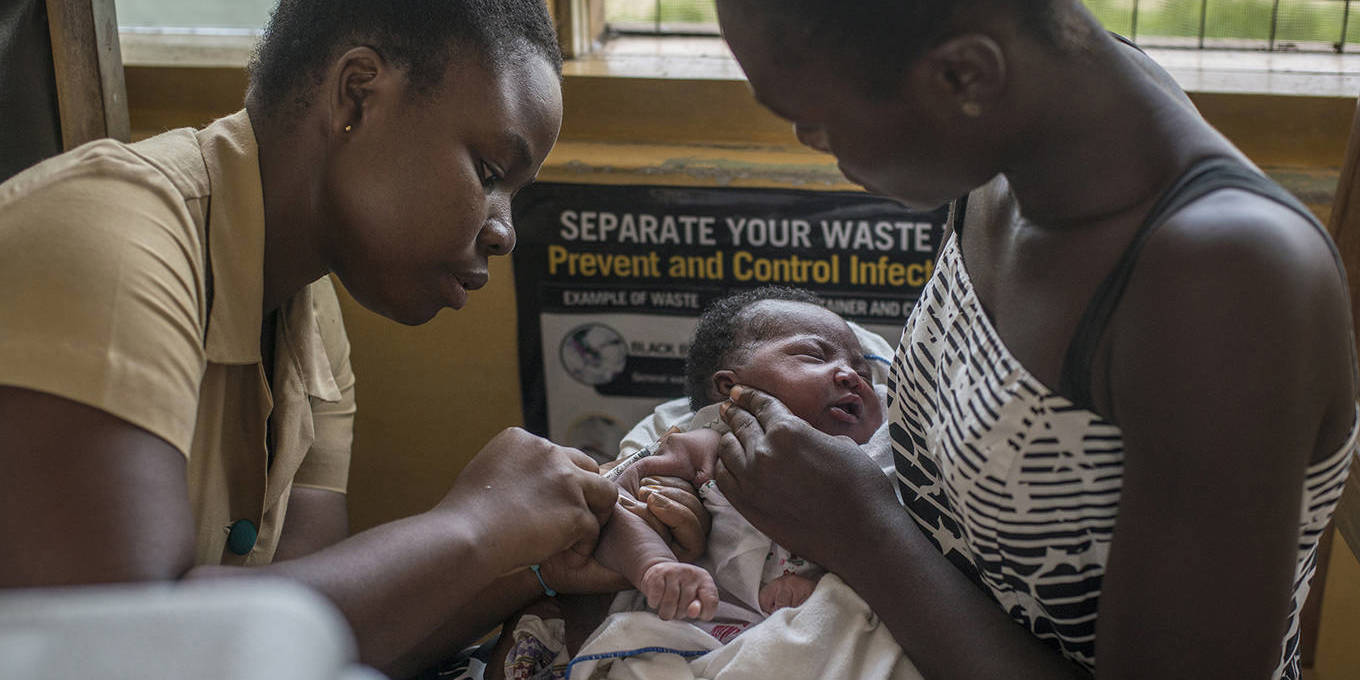
Cristina Donini and Doreen Akiyo Yomoah
GENEVA – Over the past three years, the COVID-19 pandemic has dominated headlines and spurred scientific research, with experts around the world focusing resources and any potentially useful technology on the problem. While the spotlight on COVID-19 has dimmed slightly, it remains a high global priority, sometimes to the detriment of infectious diseases linked to poverty and primarily affecting the Global South. For example, Malariakilled an estimated 619,000 people – most of them children in Sub-Saharan Africa – in 2021, when there were 247 million cases worldwide.
Malaria is an entirely preventable and treatable disease, and researchers have made great strides on both fronts. In March, for example, the World Health Organization recommended two new dual-ingredient insecticide-treated bed nets to protect against malaria-transmitting Anopheles mosquitoes, one with a more lethal cocktail of insecticides, and the other able to disrupt mosquito growth and reproduction.
Cost-effective antimalarial medicines are another important tool. In 2021, seasonal malaria chemoprevention was administered to around 45 million children aged three months to five years, who received monthly doses of therapeutic drugs at a cost of less than $4 per person. The recent news of a groundbreaking vaccine, GSK’s Mosquirix(also known as RTS,S), offers some hope, although the cost is still relatively high, at around $40 per child for the first year.
Despite these efforts, malaria continues to pose a threat to public health. Even after an investment of $26 billion to tackle the disease in Sub-Saharan Africa, the number of cases increased slightlybetween 2000 and 2019 (although the number of deaths decreased). New prevention measures – tailored to children, in particular – are clearly needed. Further innovation should take a page from the pandemic playbook: one benefit of the flood of COVID-19 research is that it demonstrated the enormous potential of monoclonal antibodies.
These drugs are laboratory-made copies of the proteins that a person’s immune system produces to attack specific foreign invaders. Historically, monoclonal antibodies have served as a powerful weapon against cancer and autoimmune diseases such as rheumatoid arthritis and lupus. While not often used as a prophylactic, the deployment of monoclonal antibodies to prevent COVID-19 and respiratory syncytial virus has shown great promise. Moreover, their exquisite selectivity enables them to discern between closely related molecular targets, resulting in fewer off-target effects. This makes it a medication with an appropriate safety profile for children (as well as other at-risk populations).
A research group at the United States National Institutes of Health, led by Robert Seder, has identified two antibodies against CSP-1, the protein that the malaria parasite uses to invade liver cells where it first establishes infection. Blocking CSP-1 should thus prevent infection. The more advanced of the two antibodies, L9LS, is currently being tested for its safety and efficacy in children in Mali and Kenya. The Mali study is assessing its success in a setting of seasonal malaria, whereas the Kenya study focuses on an area where year-round infection is possible.
Monoclonal antibodies could be a game-changer for preventing malaria and advance the long-sought goal of eradication. The current generation of antimalarial antibodies has been modified so that a single dose can protect a child for at least three months – possibly longer. The clinical trials will determine the extent and exact duration of protection, and provide useful guidance on how much improvement is needed to achieve a dosage that can be injected once per year.
Although antibodies have a reputation for being expensive, with those used to treat cancer priced at over $20,000 per month in Europe and the US, increasing the potency of this cutting-edge treatment could significantly decrease costs. Some believe an injection as small as one milliliter of the antibody drug being trialed in Mali and Kenya could protect children at a cost of only $5-10 per person.
To date, demand for monoclonal antibodies has primarily come from high-income countries; Africa accounts for only 1% of global sales. This disparity highlights the need to work with national regulatory agencies to ensure that submitted product data adequately address public-health concerns, and, in the longer term, to involve affected countries in the production of these biologics. Although manufacturing antibodies is a complex and highly regulated process, investing in the technology to do so now would be a boon for developing economies burdened by endemic malaria.
Monoclonal antibodies may be the new frontier in the fight against malaria, but getting the word out won’t be easy: stakeholders from government, academia, and industry must come together to coordinate advocacy efforts and raise awareness. (The same groups should be encouraging the development of these types of biologics for allinfectious diseases.)
We are only just embarking on a long road: the first generation of antimalarial antibodies will not be deployed until 2027 at the earliest. They offer tremendous promise as one of many weapons to fight this child killer, alongside bed nets, medicines, and emerging vaccines. The clinical trials will tell us whether this potential can be realized, but we would be wise to begin preparing for success now.
Cristina Donini is Vice President of Program Leadership and Strategy at Medicines for Malaria Venture. Doreen Akiyo Yomoah is Communications Officer at Medicines for Malaria Venture.
Copyright: Project Syndicate, 2023.
www.project-syndicate.org












